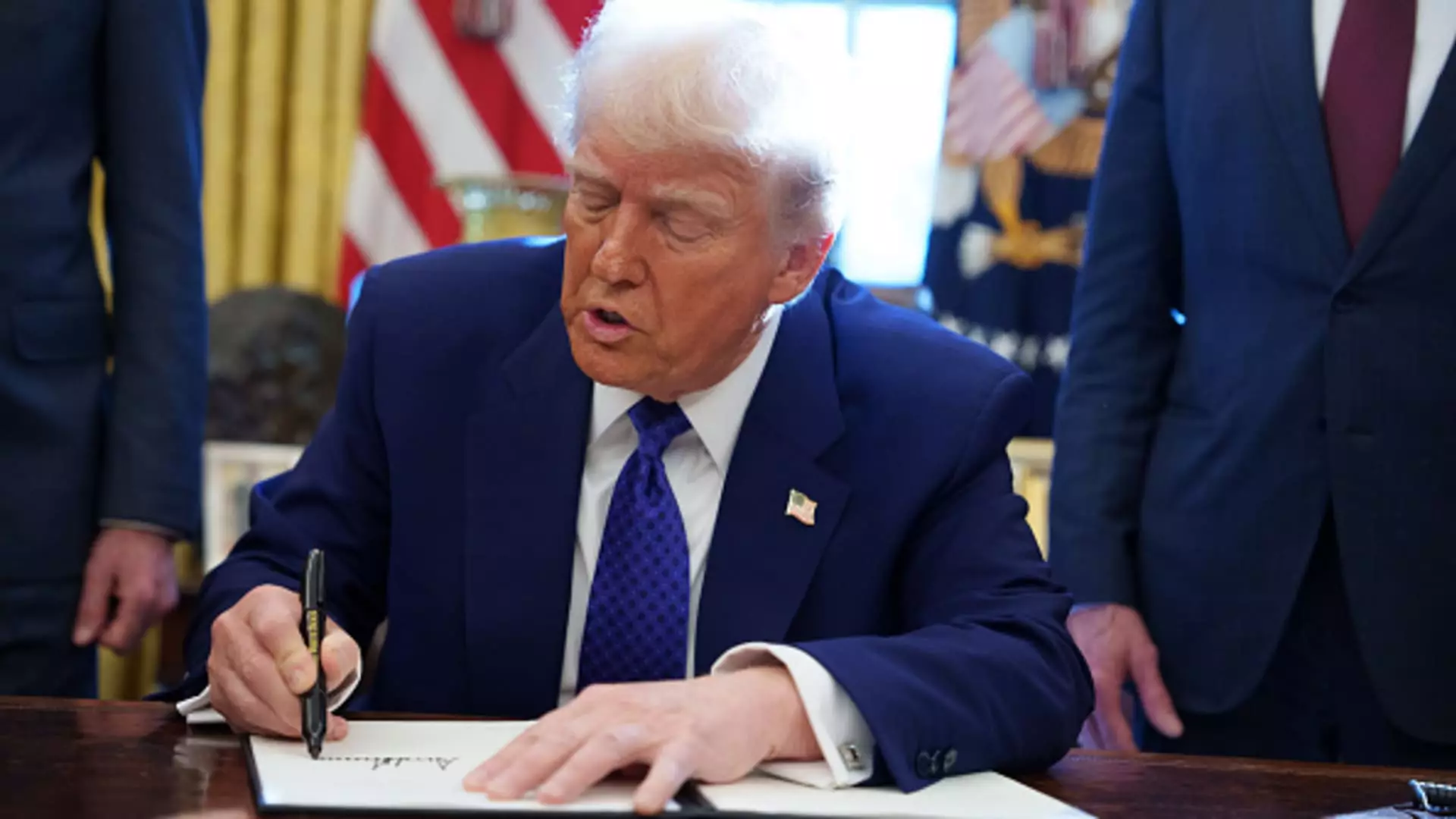In an era marked by rapid technological advancement and political division, the performance of Trump Media & Technology Group (TMTG) offers a compelling case study in the complicated intersection of media, politics, and financial viability. Following its 2024 earnings report, the company demonstrated significant financial challenges despite the ambitions that accompanied its launch on Nasdaq. This article aims to unpack the complexities surrounding TMTG’s recent results and broader implications for media ventures connected to politically polarizing figures.
TMTG’s annual report unveiled a troubling picture for the company, which has been at the forefront of the conservative media movement. The company reported a staggering loss of $2.36 per share and revenues of merely $3.6 million—an alarming 12% decline compared to the previous year. Most concerning was the net loss that ballooned from $58.2 million in 2023 to a distressing $400.9 million in 2024. These figures raise questions about the sustainability of a media platform that relies heavily on the persona of its founder, Donald Trump.
The financial woes can, in part, be attributed to drawn-out legal struggles stemming from their merger with Digital World Acquisition Corp., which faced significant pushback from regulatory authorities. These legal entanglements not only burdened TMTG with hefty expenses but also obstructed their operational capabilities, leading to decreased revenues from advertising partnerships—one of the core revenue channels for the company.
On the stock market, shares of TMTG experienced their share of volatility since debuting under the ticker “DJT.” Initially, the stock nearly doubled in value after Trump’s victory in the U.S. presidential election in November 2024, creating a sense of euphoria among investors. However, as of the latest trading session, the company’s shares dipped approximately 1%, with an overall year-to-date decline of 11%. This significant downturn has resulted in a market capitalization of $6.59 billion, raising questions about investor confidence in the company’s future trajectory.
One of the more unconventional strategies adopted by TMTG management is their explicit refusal to utilize traditional social media metrics, such as active user counts and average revenue per user. In their annual filing, they argued that these metrics could detract from focusing on more strategic evaluations for growth. This approach appears to defy conventional wisdom in the media landscape, where metrics are essential for understanding performance and user engagement.
Instead of focusing solely on quantitative measures, TMTG expressed a commitment to exploring innovative initiatives like their Truth+ video streaming service, which has recently expanded to mobile platforms. Yet, the impact of these ventures on revenue generation remains to be seen amidst ongoing financial struggles.
Notably, TMTG operates within a political context that both supports and challenges its existence. With Donald Trump at the helm, the platform has attracted a dedicated following of approximately 8.9 million users, offering an alternative narrative to mainstream media channels. However, the dependence on Trump’s political persona could simultaneously be a double-edged sword. The company has to navigate the complexities of the political landscape, particularly as public opinion fluctuates.
Additionally, comparisons to more established tech giants like Meta underscore the unique hurdles TMTG faces in carving out its niche within the competitive media space. While larger companies benefit from diversified revenue streams and proven user engagement, TMTG’s singular focus raises concerns about sustainability.
Despite these challenges, TMTG maintains a robust cash position of $776.8 million, against a relatively modest debt of $9.6 million, giving it a buffer for potential maneuvering. Chairman and CEO Devin Nunes expressed intentions to look for partnerships and acquisitions that can facilitate growth, suggesting a possible pivot toward becoming a holding company with multiple subsidiaries.
As TMTG continues to grapple with its financial realities and strategic direction, the coming months will be critical. The ability to evolve amidst regulatory challenges, declining revenues, and fluctuating public sentiment will be paramount in determining whether this politically infused media venture can ultimately thrive in a complex ecosystem. The future may hold numerous possibilities, but it also necessitates a candid evaluation of the company’s limitations and the broader implications of its business model.


Leave a Reply